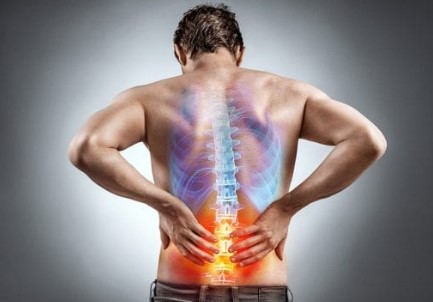How to Treat Chronic Back Pain Effectively

Nowadays, people face various medical and health issues due to their bustling lives in which they neglect their health, leading to health problems. There are several health issues, including chronic diseases. One of the most common issues people undergo is back pain, which is also considered a chronic ailment if it lasts for three months or more, for which doctors recommend taking back pain treatments.
Most people are observed to have this kind of back pain in a periodic manner. If you’re going through chronic back pain, it is important for you to understand its causes and symptoms in order to identify your condition and take proactive steps for management and testing.
What Are the Causes of Chronic Back Pain?
Like any other chronic disease or disorder, back pain is also caused by specific reasons, such as injury, surgery, or age-related issues. Let’s discuss the most common causes of chronic back pain:
In most people, the back pain is caused by the suppressing of the nerve, which causes pain in the back. This happens when the spinal canal narrows, also known as spinal stenosis.
One of the major causes of chronic back pain is arthritis of the spine, in which the cartilage inside the spine starts thinning with time.
Some people may face back pain due to the stiffness or tenderness of the back muscles, which may result in muscle pain. This mostly happens without any clear cause and is also known as myofascial pain syndrome.
It has been seen that some individuals, especially women who lift excess weight, experience pain in the back due to bulging of the disk, which is also called disc bulging or herniated disk problem.
Top 7 Treatments for Chronic Back Pain without Surgery
It is always crucial to know what is causing you pain while considering all available options to treat the pain. However, it is important to stay calm in such situations and avoid invasive or permanent surgeries because it is the last stage of treatment, and initial treatments are also available to take.
If an individual with pain in the back undergoes surgery, they can ensure correction of structural ailments that are causing pain, but it doesn’t guarantee that the pain will be eliminated, and the pain may become more complex.
That’s why it is essential to consult with a back pain doctor or a physiotherapist to get an accurate diagnosis and receive back pain treatments that diminish the severity and frequency of the back pain. Considering the need to avoid surgery, here are the best treatments that can treat upper or lower back pain without surgery; let’s have a look:
1. Treatment With Injections
With the advancements in technology, back pain can now be treated with injection-based back pain treatments. If a person with pain in the back doesn’t get cured with the normal treatments, then doctors prescribe that take specialized injections, such as epidural steroid injections, trigger point injections, nerve blockers, ablations, and some other kinds of injection-based procedures to treat the chronic back pain. While injections can stop or reduce the pain for some time, they aren’t a permanent solution for isolating pain. Also, you should know that these injections can only be taken if the causes of pain are known, as they can treat specific causes but don’t work for others.
2. Physiotherapy Exercises at Home
Physiotherapy and exercises are known to be the best and fundamental back pain treatments for chronic back pain that don’t worsen the pain and help you enjoy life. If you or your loved one are experiencing chronic back pain, then considering physiotherapy at home is a smart choice. However, it is important to consult with a physiotherapist rather than doing exercises on your own because not every exercise is meant for everyone. A physiotherapist can assess the cause and help with the exercises that are suitable for the patient’s particular needs to achieve positive results more comfortably.
3. Alternative Treatments
For persistent back pain, nonsurgical spine treatments such as electrical nerve stimulation, laser therapy, biofeedback therapy, massage, and acupuncture can be effective. These tactics are worthwhile to investigate because, all things considered, their potential advantages greatly exceed their possible drawbacks. Consult your spine expert about any potential complementary therapies.
4. Lifestyle Modifications
Before you ever contemplate pills or operations, there are many strategies to modify and adjust your behavior and activities that can greatly reduce chronic back pain. When performing laborious tasks, take breaks; when carrying large or many items, like groceries, make multiple trips or ask for assistance. Make a note of the activities that aggravate your discomfort and try to avoid them, but spend more time doing the things you find relaxing and pleasurable. Reducing bad habits like smoking, which has been shown to exacerbate pain and impede healing, is also crucial.
5. Mindfulness and Meditation
Prolonged back pain can be physically and psychologically taxing. You might be referred to a rehabilitation psychologist in order to treat the psychological effects of managing chronic pain, such as sadness, impatience, and frustration. This expert might suggest tai chi, yoga, meditation, and other cognitive and relaxation techniques to improve your conscious control over your nervous system and how it reacts to stimuli.
6. Diet Change
Certain diets, particularly those heavy in processed foods, trans fats, and refined sugars, are incredibly inflammatory. See your doctor to find out how you might modify your diet and whether it’s a factor in your persistent back pain. Back pain may be lessened by maintaining a healthy weight since it puts less strain on your spine. The best method to receive individualized guidance on how to acquire more balanced foods and form eating habits that support your health objectives is through a referral to a nutrition consultant.
7. Pharmacologic Treatments
A wide range of pharmaceuticals, including muscle relaxants, antidepressants, anti-inflammatory drugs, and oral and injectable treatments, are used to treat persistent back pain. Any drug, though, may have unfavorable side effects. Consult your physician about drug options that target the source of your pain, if known. To reduce side effects, find the lowest effective dose and only take medication for as long as it is beneficial and well-tolerated. Only after first- and second-line painkillers have been tried and failed to provide relief should opioids be administered.
Read also: Transforming Healthcare: The Role of Medical Device Software Development Companies
The Final Words
In short, managing and eliminating chronic back pain effectively needs a comprehensive approach that covers the actual causes and the best-suited treatments for each individual. While surgery or operation might seem like an option for some people, exploring non-invasive treatments such as physiotherapy, lifestyle modifications, and alternative therapies can be convenient in bringing great relief without the risks associated with surgical intervention.



